A Solo Weekend in Central Louisiana
*Originally published on simplysara.com June 3, 2017
Every week I travel solo for work. But it’s not very often I travel solo for fun AND on purpose. This past weekend, I decided to do just that. Over the weekend, I trekked down to central Louisiana, for a time of respite and retreat and to travel the Solomon Northup Trail.
About a year ago, I watched and read 12 Years A Slave and it totally wrecked me for the plight many suffered at the hands of evil men and women. And I can hardly bear that it took place in my beloved home state of Louisiana.
Because I’m in a hotel every. single. week, I KNEW I didn’t want to visit another Hilton property. I set out to find the perfect location and setting for a weekend getaway that was centrally located within the Solomon Northup Trail. And what I found exceeded all my expectations.
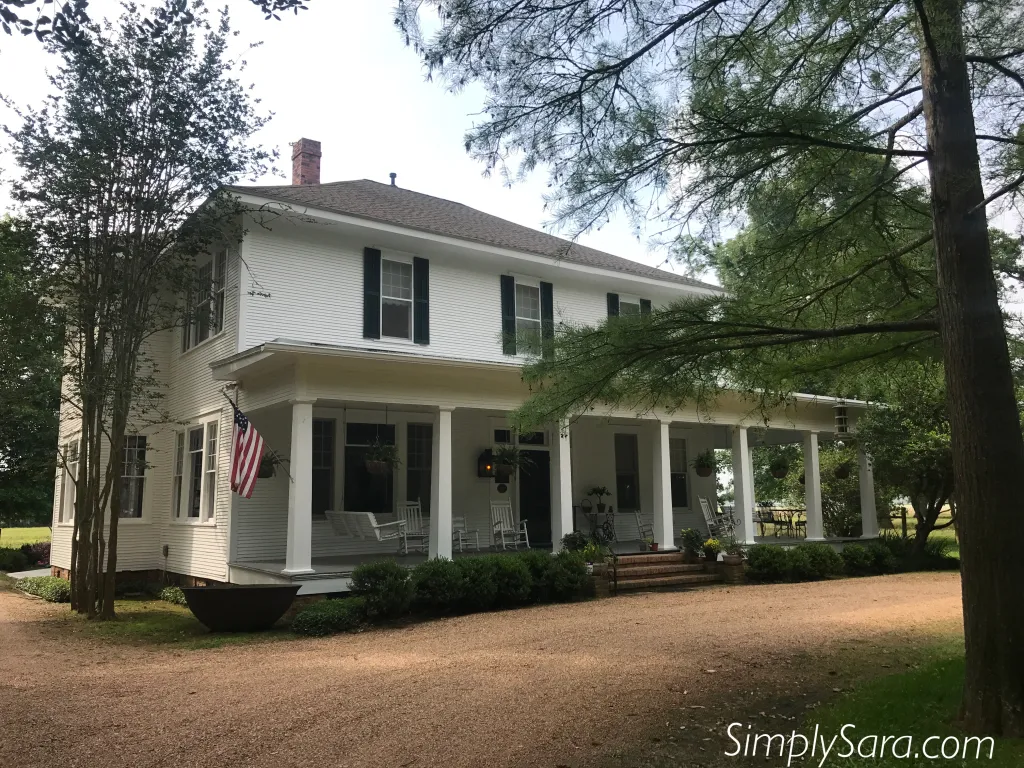
Chickamaw Hospitality is a quaint and picturesque 100 year old farmhouse, situated on Bayou Boeuf just outside Lecompte in central Louisiana. The country road leading up to the farmhouse is flanked with hundred year old oak trees. The front lawn of Chickamaw also sprawls with massive oak trees that immediately welcome arriving guests. The innkeepers, Sara and Harry, are the epitome of hospitality. Sara made me feel right at home. She welcomed me with open arms and I left there having gained a sweet, new friend!
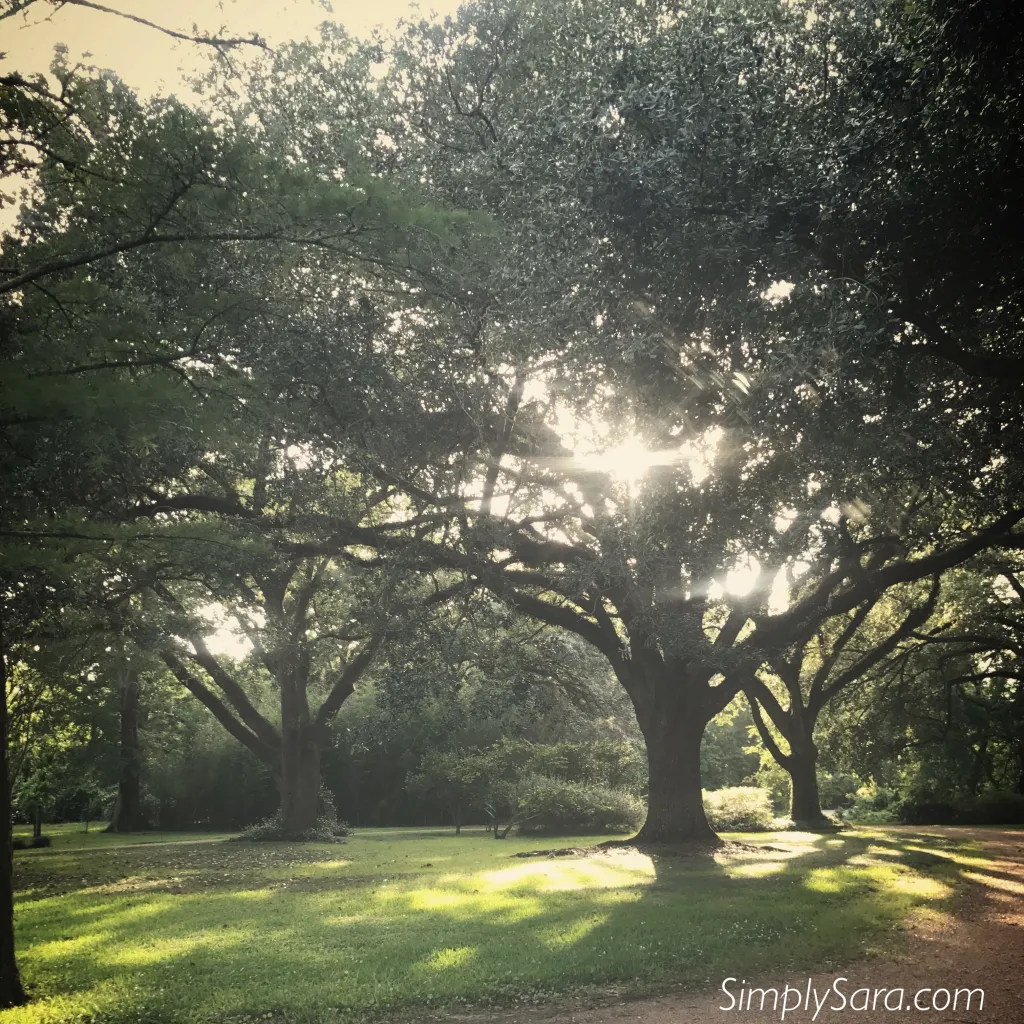
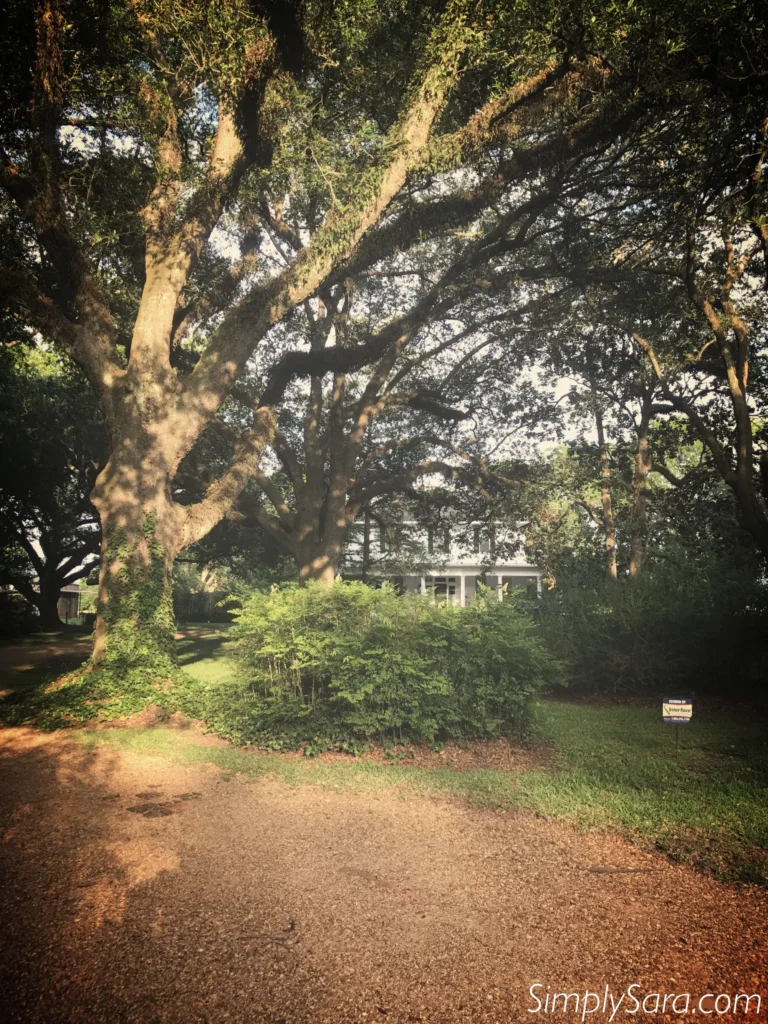
I spent each early morning and late evening in the backyard overlooking a former sugarcane plantation. As I soaked in the quiet, redbirds flocked around me while Sara’s cats traipsed and rubbed all over my legs and lap. The breeze blew gently and I was transported back to a simpler time that granted me much needed rest and respite.
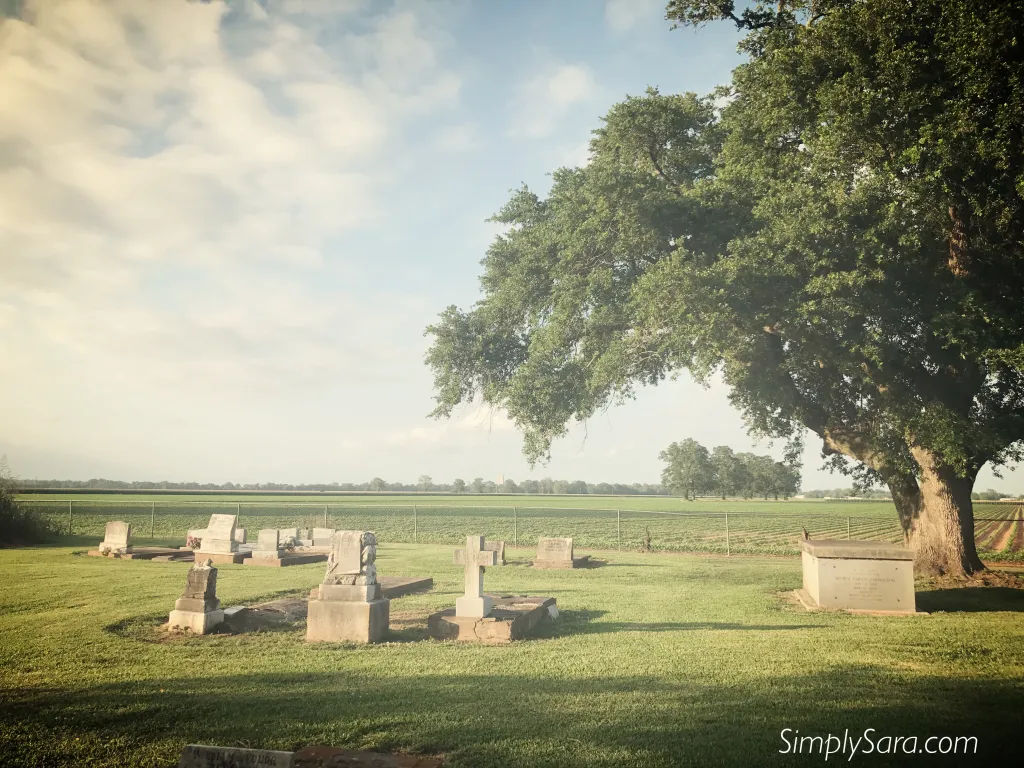
I walked morning and evening along the bayou. The weather was perfect and the air, fresh. A small community church lies not far from Chickamaw. I explored the cemetery. It was fascinating to read the epitaphs! I googled many of the family names to learn more about the history of the area and the ancestors that originally farmed the land.
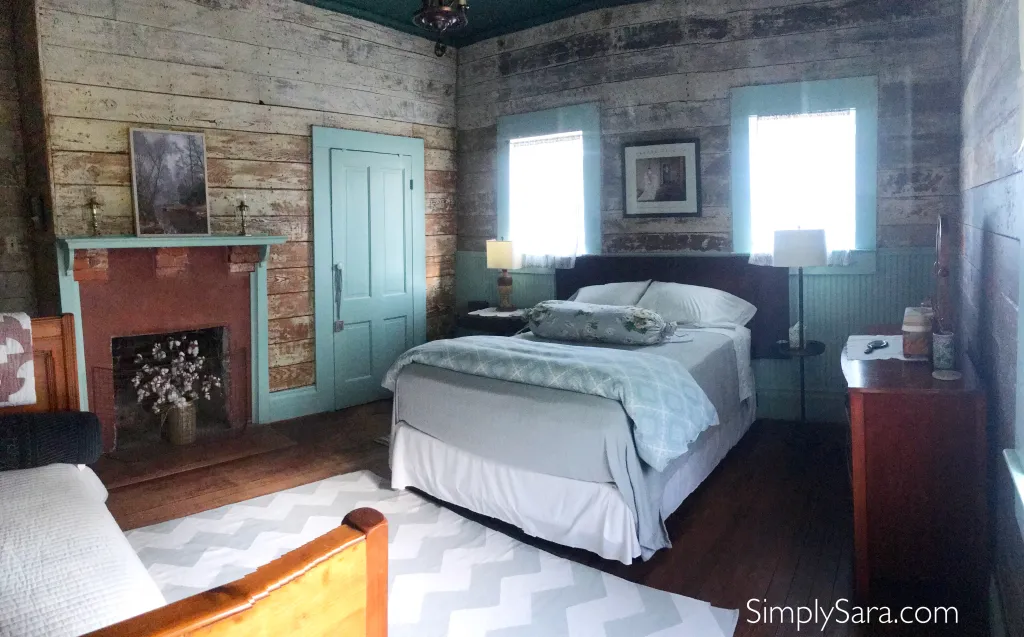
Back at Chickamaw, my guest room was utterly charming. The shiplap was raw and contained an incredible amount of character. The baseboards were painted in a light turquoise and the ceiling, a complementing dark turquoise. It was so homey, inviting and comfortable.
On the way down to central Louisiana, I began traveling the Solomon Northup Trail, stopping first at the port in Alexandria where Solomon disembarked a steamboat and began his trek on foot to the Ford Plantation. I put myself in his shoes, feeling the fear, hurt and anger I’m certain embraced him in the moment. Just a few short weeks prior, he had been a free man living in New York and now was wiped of his identity and dignity and given a new name of “Platt.”
After leaving the port, I traveled to LSU-A for a tour of the Edwin Epps plantation house (moved from the original location) that Solomon and Samuel Bass were building when Samuel helped Solomon gain his freedom. The house is full of artifacts from the mid-late 1800s that were actually used by slaves and plantation owners. There was a WEALTH of information about the home, time period and Solomon himself. And as an added bonus, I got to meet the sweetest family from Lecompte, who had also driven up for a tour.
Before retiring into Chickamaw, I traveled up and down Bayou Boeuf, thinking of Solomon as he developed an innovative way to move logs up and down the bayou. I also visited Smith’s Bridge, where Solomon crossed over on foot as he walked to the Ford Plantation (after arriving at the port in Alexandria).

Saturday I set out from Chickamaw shortly after breakfast and made a pit stop at Lea’s for a second breakfast and a piece of pecan pie. Lea’s is LEGENDARY and has been a central Louisiana staple for nearly 90 years. Before I-49 went in, it was a perfect breakfast or lunch stop on the way to south Louisiana. Now, it’s smidge off the beaten path, but well worth the detour!
Throughout the day, I traveled throughout central Louisiana to Forest Hill, Cheneyville, Bunkie, Holmesville and Marksville before heading back to Chickamaw for the evening.
I was completely taken aback by all the nurseries in Forest Hill! There had to be like 40 nurseries along a 10 mile stretch of road. Apparently the climate and soil are good for growing vegetation, because I’ve never seen anything like this, nor did I know it existed!
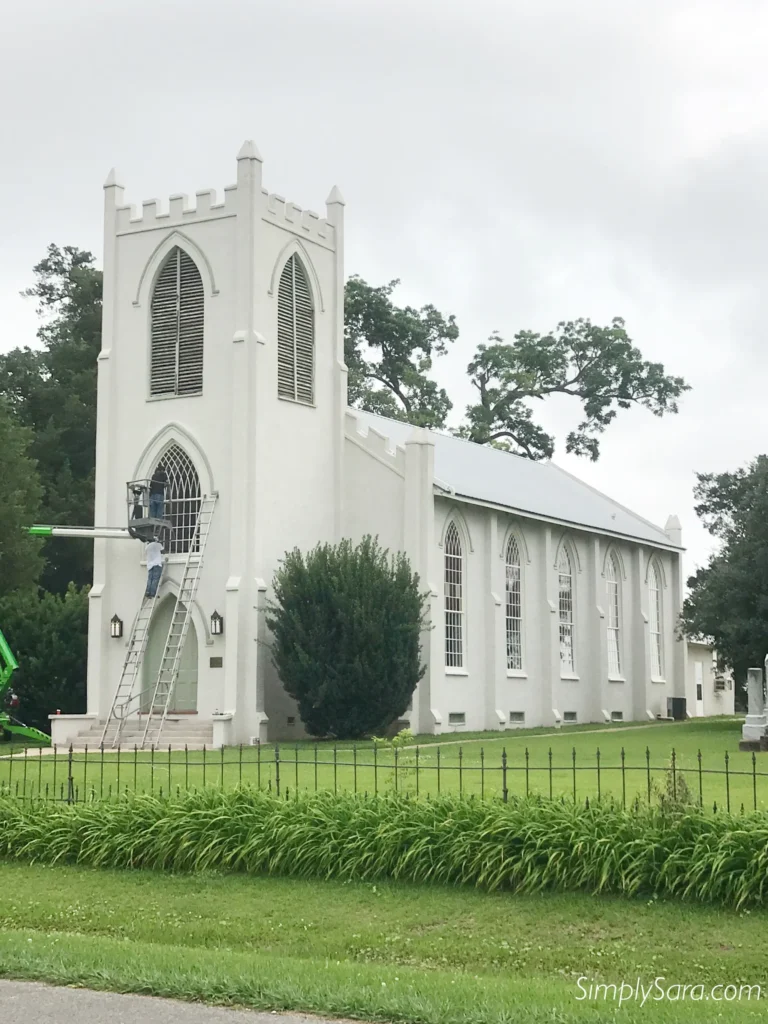
A special treat was visiting the Trinity Episcopalian Church in Cheneyville. Built in 1861 by slaves, it is on the National Register of Historic Places and sits on the edge of town at the crossing of the bayou and a sugarcane plantation. And it just so happened, I caught the painter (Billy) there working (who is also a member) and he graciously offered a tour of the chapel! It was amazing! I followed him up the stairs to the church balcony where he rang the bell (as he does each Sunday morning at 7:30 to signify the start of service). It was incredibly humbling to stand in the balcony, realizing it was the place (and the ONLY place) the slaves were allowed to sit. It was surreal!
We traveled back down the stairs where Billy told me about the lamps, which were originally kerosene and had later been converted to electricity at an astronomical cost. He also showed me the “ankle board” underneath each pew, meant to prevent ladies’ ankles from showing (how times have changed) as they knelt down to pray. He showed me the baptismal for babies and well as the intricate carvings and details of the pulpits.
As we departed the church, he was careful to point out the bullet holes in the front door, arising from a gun battle across the bayou during the Civil War. Billy also pointed out the graves of Dr. Sue Eakin (who devoted her life’s work to tracing the history of Solomon Northup), Ralph Smith-Smith (who built the first railroad west of the Mississippi) and Ms. Mary McCoy (a plantation owner who hosted a large feast every Christmas for slaves from the surrounding plantations).
After departing the church, I traveled around Cheneyville a bit, noting plantation homes significant to the story and also architecture in general. I also visited the Ford family cemetery, where Solomon’s first owner is buried.
I then traveled over to Bunkie and the Holmesville area where the vast majority of Solomon’s 12 years took place.
As I approached Fogleman Cemetery, the gravesite of Edwin Epps’, I was taken aback by the condition of the plot. Other than the signs detailing what the area contained, there was no other indication this was a cemetery.
In the story, Solomon describes William Ford as kind and considerate, while Edwin Epps was the epitome of evil. I thought it was incredibly ironic how nearly 150 years later, it appears history doesn’t forget. Ford’s plot was neat and manicured. Epps’ was overgrown and snakey.
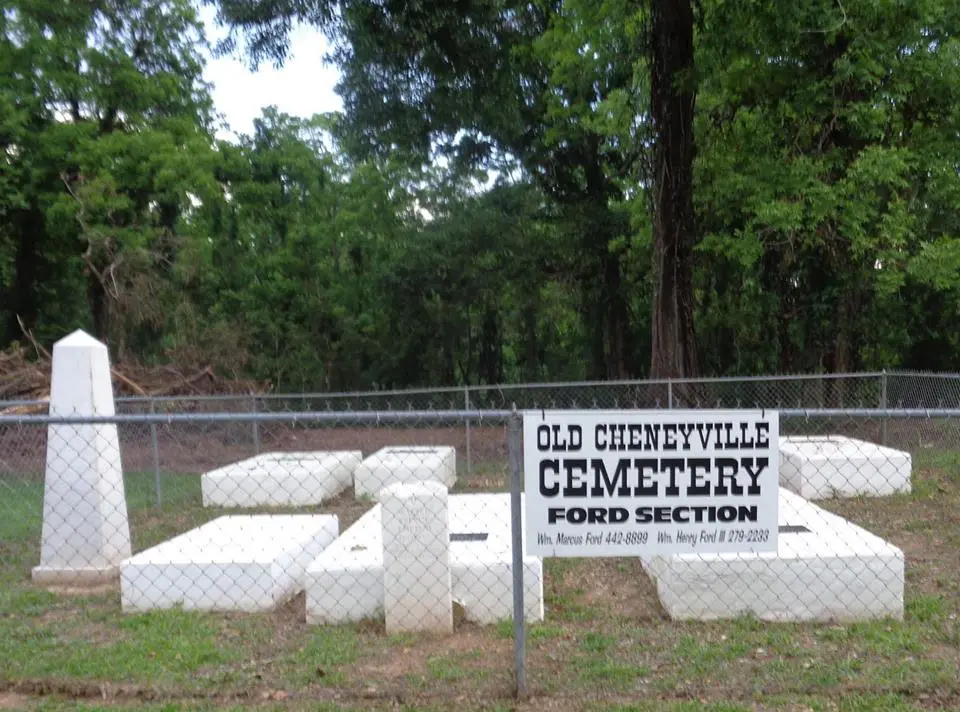
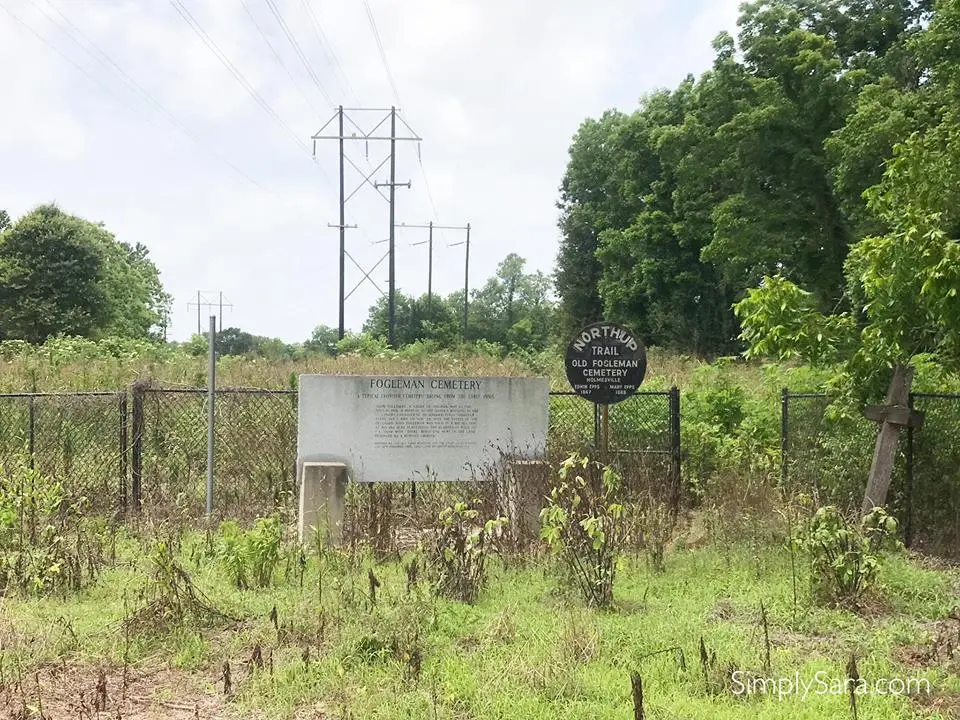
After leaving Fogleman Cemetery, I traveled to the location where Solomon spent 10 of his 12 years—the Epps’ Plantation. It was pure hell and I doubt any of us would have survived longer than a week—speaks volumes of Solomon’s resilience and resolute determination to live.
At the location of where the Epps’ Plantation sat, it is now completely rural and isolated. You have to travel down a dirt road and cross over a wooden bridge to get to the property. Just past the bridge is a large oak tree and the house (now at LSU-A) stood close in the vicinity. Solomon’s slave cabin was also nearby and close to the bayou.
I stopped my car, turned off the engine and sat in quiet at Epps’. I again allowed myself to hear the sounds Solomon would have heard—the ripple of the bayou, the rustling of the leaves on the oak trees and sounds of the birds and insects. And again, I was humbled. I thought of Patsey who had walked probably a ½ mile further down that same dirt road to the Shaw Plantation just to get some soap. And was severely beaten upon her return with no sympathy from Epps despite being one of his highest daily producers of picking cotton. To be in that moment, see the same sights they saw and hear the same sounds was utterly surreal. I honestly cannot put it into words. As I looked across the current sugarcane fields and pictured slaves toiling in the hot summer sun, it literally took my breath away. I can read about slavery all day, but it greatly affected me to stand in the same location where such hideous acts took place.
After leaving Epps, I traveled to a few other notable sites along the Solomon Northup Trail including plantations he was “leased” out to when caterpillars destroyed Epps’ crops causing there to be no work.
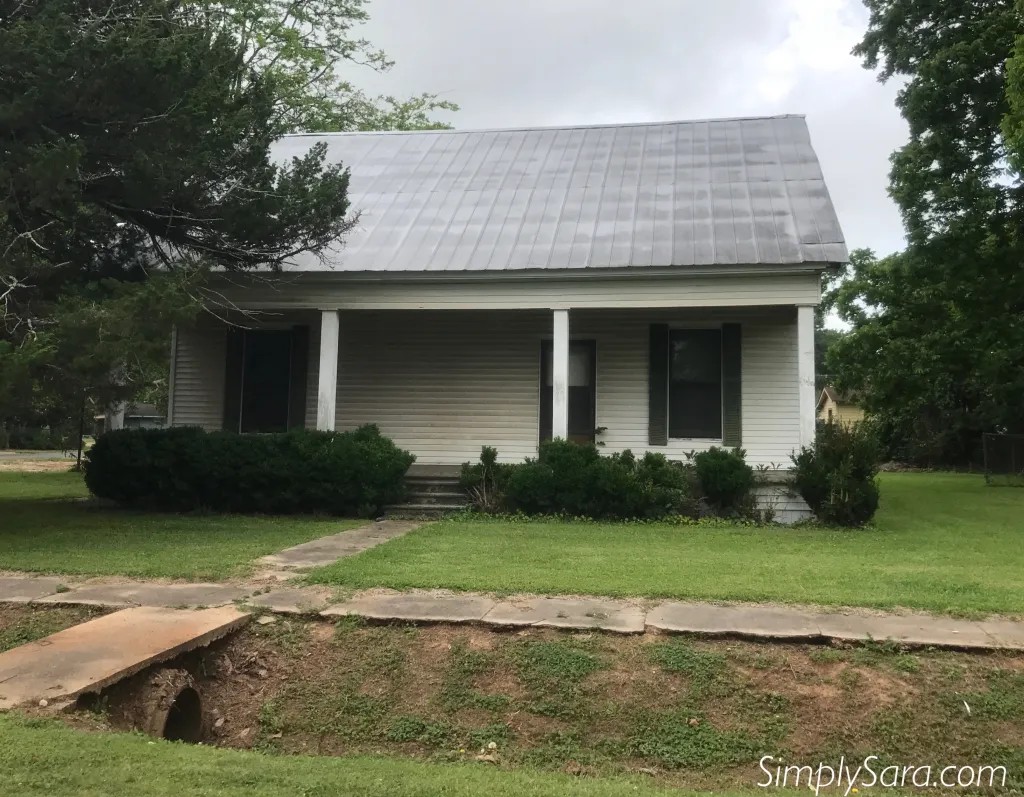
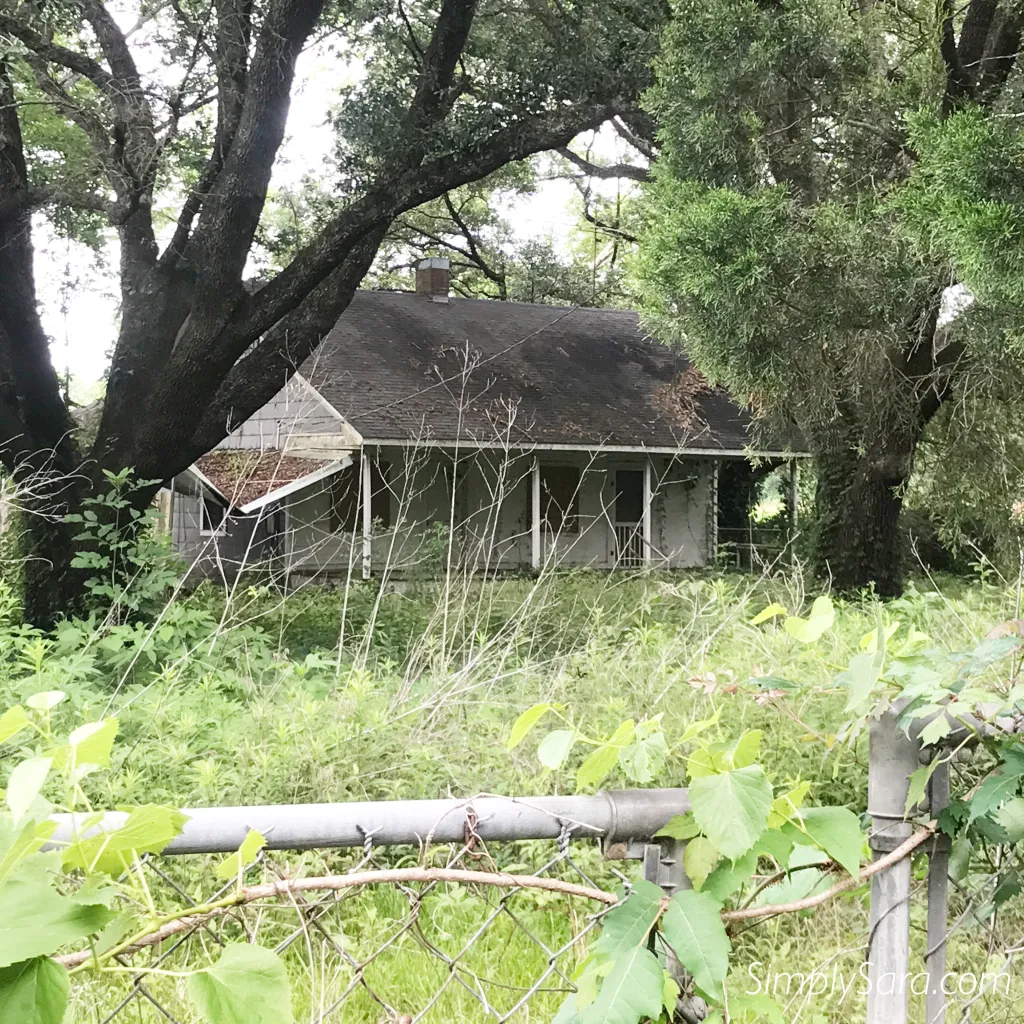
Interestingly enough, these communities, once thriving and bustling with trade and activity, now struggle to exist. Poverty is rampant. Magnificent old homes and structures are soon to be lost. It saddens me so to think these communities will likely never again know the “hey day” experienced 150 years ago. Seeing old houses falling down just beckons me more to save our history. It’s a desire and draw I can’t seem to shake.
Toward the end of the trail, I found myself in Marksville, the largest community of all the towns I visited throughout central Louisiana. I saw the location of the post office where Samuel Bass mailed the letter initiating Solomon’s freedom. I saw the courthouse where Solomon’s freedom was granted. Then, I traveled down a long and winding country road to a river landing where Solomon boarded a steamer for a second time. But this time, he boarded a free man. And he eventually, after 12 long, horrible years in Louisiana, made his way back to New York to be reunited with his wife and three children.
While in central Louisiana, someone asked me, “Why did you come down here? All by yourself?” And my answer was easy. I needed rest and respite. I needed time to reflect and pray. And I also wanted to experience the Northup Trail firsthand and allow plenty of time for processing and understanding of the incredible events that altered Solomon’s life as well as the lives of hundreds of thousands of others.
My weekend in central Louisiana exceeded all my expectations. It confirmed a deep sadness for a dark time in the history of our country, but also a great joy for the healing that has come to these communities. Louisiana is steeped in antebellum history and we can never change that. But we can learn to empathize for the descendants and promote unity, healing and respect.
I never met a stranger on this trip. Every single person was warm, kind and caring. Smiles, handshakes and hugs were given away freely. It’s truly a different world and culture out in the bayous. So very different than the fast paced, non-stop lifestyle many of us are used to. It was incredible to slow down, soak in some history and spend time alone. It’s good to be comfortable in our skin. It’s good to have interrupted time to pray. It’s humbling to eat alone at a restaurant and healing to take a long walk down an oak tree enveloped lane, listening to the peaceful sounds of a bayou.
I wish I had more time to take solo trips that are for fun and not work. I came home completely refreshed and relaxed! My heart longs for Chickamaw, the bayou and the slower pace of life I experienced there. I will definitely be traveling back! What about you? Have you taken a solo trip that was refreshing to your soul? If so, I’d love to hear all about it! Please share about your solo trip in the comments below.
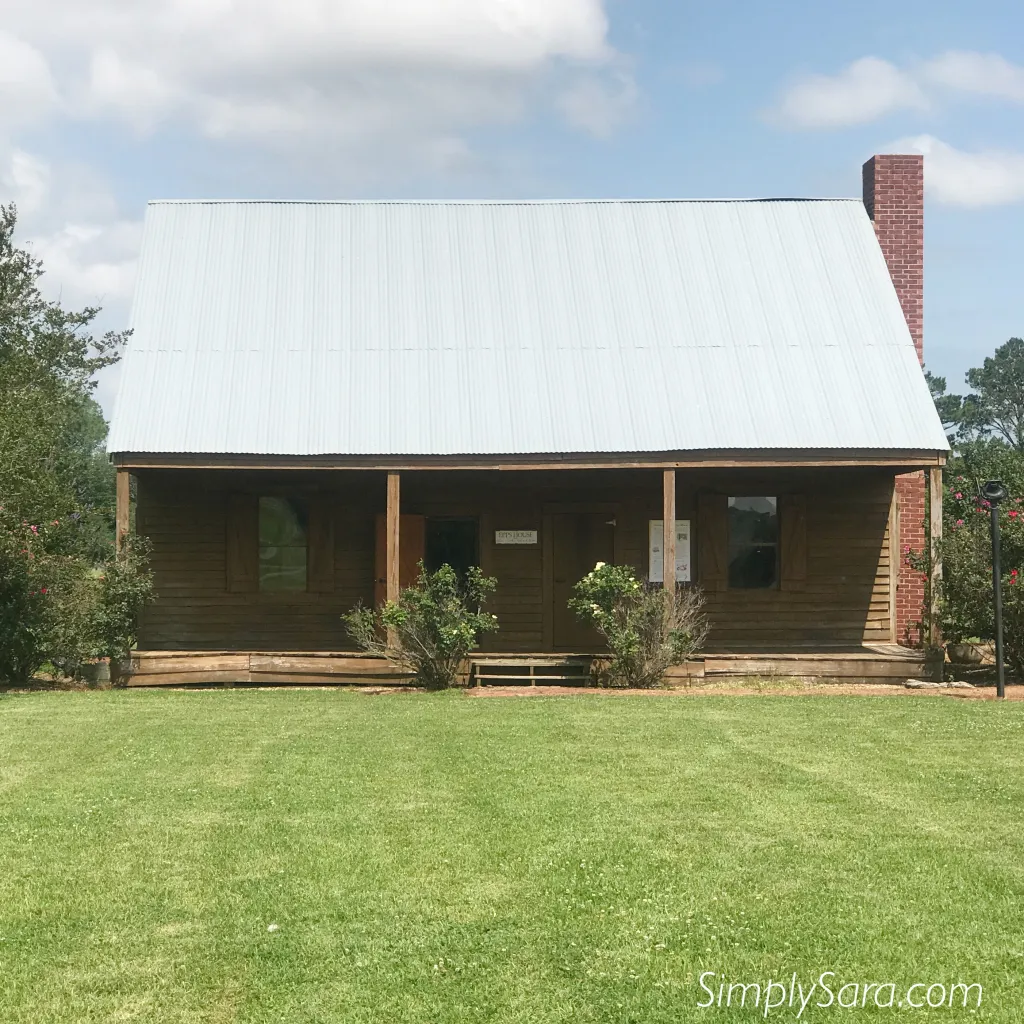
You are amazing and such an inspiration. Thank you for sharing your journey. I know Sara and Harry, grew up at what is now LSUA and knew Sue Eakin well. I love your perspective…it’s given me a new one! Thank you, Lord! Side note: My mom is from Homer and my sister raised her family in Minden!
I read about Lea’s famous pies and had to check them out. Mom and I took a journey down there and thru the bayous . It broke my heart to see the disarray of the shanty homes. If you listened hard enough you could hear some of the old gospel songs being sang, not literally, no one could have sang those songs better than those of old. I personally have never understood slavery.
I know this was an amazing trip. I would love to see some of these places myself. Thanks for sharing your experience.
I enjoyed this story so much, Sara. You are a great writer. I felt as if I were on that journey with you. I am a lover of old Louisiana history and anything Southern. There is NO culture like ours and I am proud of most of it….except slavery……..it breaks my heart. I hope you make more trips such as this one and that we all get to read about them.